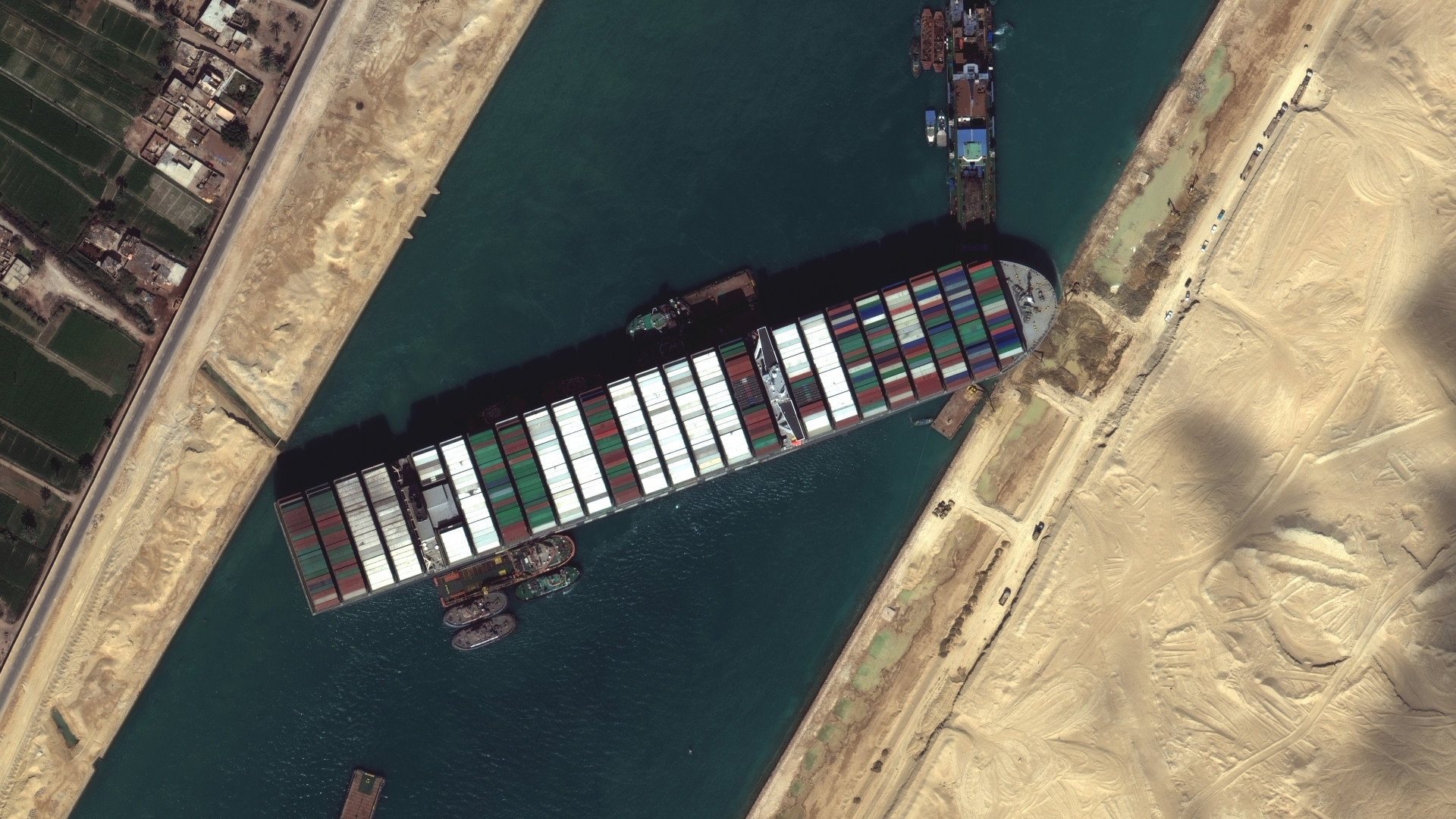The Panama-registered container carrier, Evergiven, crossed Tuesday morning near the southern end of a canal connecting the Mediterranean with the Red Sea, in a narrow section where ships could only travel in one direction at a time. Japanese operator Sui Kisen said the accident was caused by strong winds.
The Dutch company Boskalis, among others, is freeing the 400-meter vessel with the help of locomotives and bulldozers and taking advantage of the tides. By Saturday, the stern and the ship’s rudder had been freed from sediment. Around 20 thousand tons of sand has already been dug around the bow of the ship, which remains a small amount. In addition, 9,000 tons of ballast water has already been pumped out of the ship. More larger locomotives are waiting at the scene by dawn Sunday, and they expect the tide to be half a meter higher on Sunday, which could help as well. Speaking to Dutch TV, Boskalis CEO Peter Berdowski said he hopes to release the ship by the middle of next week at the latest.
But Osama Rabie, head of the Suez Canal Authority, said in a press conference: It is not possible to know when the ship can be released, but it can happen quickly. He did not rule out the possibility that the ship’s transit was caused by something other than strong winds, such as human omission or a technical malfunction. He also said he hoped there would be no need to unload the ship, although they were prepared for that as well: a crane standing on the shore. Only emptying up to 600 containers will greatly increase the length of the entire process. This can cause ships to wait to arrive elsewhere.
The ship transports 18,300 containers. At both ends of the canal, a total of 321 boats are already waiting to cross.
About 12 percent of global maritime trade passes through the 193 km long canal. In the case of uninterrupted traffic, this means about 50 ships per day.
Cover photo: Getty Images / Maxar






